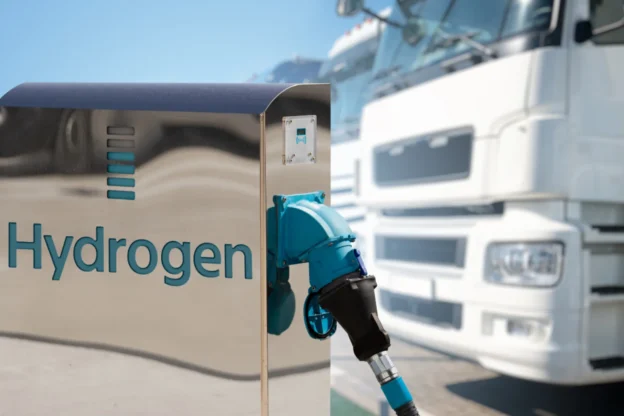Table of Contents
Green hydrogen is emerging as a key player in the global energy transition, and Mexico is no exception to this trend. With a series of projects underway and significant investment, the country is seeking to position itself as a major player in the production and use of this clean energy source.
There are currently 26 green hydrogen projects underway—18 of them in different stages of development and 8 in planning—spread across 14 states, with a total estimated investment of US$21.227 billion. These initiatives have the potential to generate 3 million jobs and prevent the emission of 53 million tons of CO2 during the period 2030–2050.
Among the most notable projects is the plant in Salina Cruz, Oaxaca, announced by former President López Obrador, which involves an investment of $10 billion from a Danish fund. The project in Campeche is a hydrogen-ammonia plant with an estimated investment of US$1.1 billion.
There is also the “Pacífico Mexinol” project in Sinaloa, announced by former US ambassador Ken Salazar, which seeks to produce green and blue methanol, with an investment of US$2.2 billion.
Likewise, there is a project in Durango, developed by companies with Dutch participation, with an investment of $1.2 billion, and the project in Baja California, which stems from the announcement by a French company of an investment of $2.5 billion in green hydrogen projects in the country.
These projects not only seek to supply the domestic market, but also to position Mexico as an exporter of green hydrogen, taking advantage of its strategic location and natural resources. Investments in green hydrogen in Mexico are distributed across various regions of the country, with projects also underway in states such as Sonora, Guanajuato, Yucatán, Nuevo León, and San Luis Potosí, among others.
The Mexican Hydrogen Association (H2México) estimates that by 2050, investments in this sector could reach $60 billion.
The diversification of production is not limited to hydrogen: it is projected to reach an annual production of approximately 196,707 tons of green hydrogen, along with the production of 970,000 tons of green ammonia and 2. 1 million tons of methanol (green and blue), products intended for various applications ranging from mobility, through industrial decarbonization, to power generation in combined cycle power plants.
Mexico can learn from international experiences in green hydrogen development Chile was the first country in Latin America to establish a National Green Hydrogen Strategy, with the goal of producing 25 GW by 2030 at a competitive cost. It currently has thirteen projects in development and has attracted the interest of multinational companies. Colombia has made significant progress since the publication of its hydrogen roadmap in 2021. It already has two green hydrogen pilot tests in Cartagena that use solar-powered electrolysers.
Spain has made a strong commitment to green hydrogen, tripling its targets for the next six years and submitting the largest number of projects to the European Hydrogen Bank. Projects such as the Iberian Hydrogen Corridor will facilitate the export of green hydrogen from Spain to Europe.
What is needed?
The Mexican Hydrogen and Energy Transition Association, made up of nearly 60 companies, has been a catalyst for growth in the sector. Not only does it act as a bridge between developers, investors, and authorities, but it has also actively promoted the generation of technical and regulatory proposals, such as the Roadmap and the Clean Hydrogen Industrial Strategy.
In these documents, the Association proposes the promotion of a new national value chain that includes everything from the manufacture of hydrogen vehicles to electrolysers, storage tanks and hydrogen-powered electric turbines.
One of the main challenges identified by H2México is the absence of a National Green Hydrogen Strategy. Unlike other countries that have already drawn up concrete plans, Mexico still lacks a public policy that articulates the development of this industry.
Collaboration between the government and the private sector will be key to unlocking the potential of green hydrogen in the country. H2México has proposed specific commitments to the State: from designing a clear regulatory framework and establishing fiscal and financial incentives to guaranteeing access to renewable energy for its production.
This would enable current projects, which already account for almost 10% of the total amount of the Mexico Plan announced by President Claudia Sheinbaum, to become a real lever for economic and sustainable development.
The push for green hydrogen in Mexico is undoubtedly a strategic move that combines investment, innovation, and the urgency to adapt to the demands of the global energy transition.
Consolidating an industry based on this technology will not only enable the country to achieve important decarbonization goals, but also position it as a global leader in clean energy generation and in restructuring its industrial model for a sustainable future.
This article was developed by Israel Hurtado and published as part of the fifth edition of Inspenet Brief magazine August 2025, dedicated to technical content in the energy and industrial sector.

